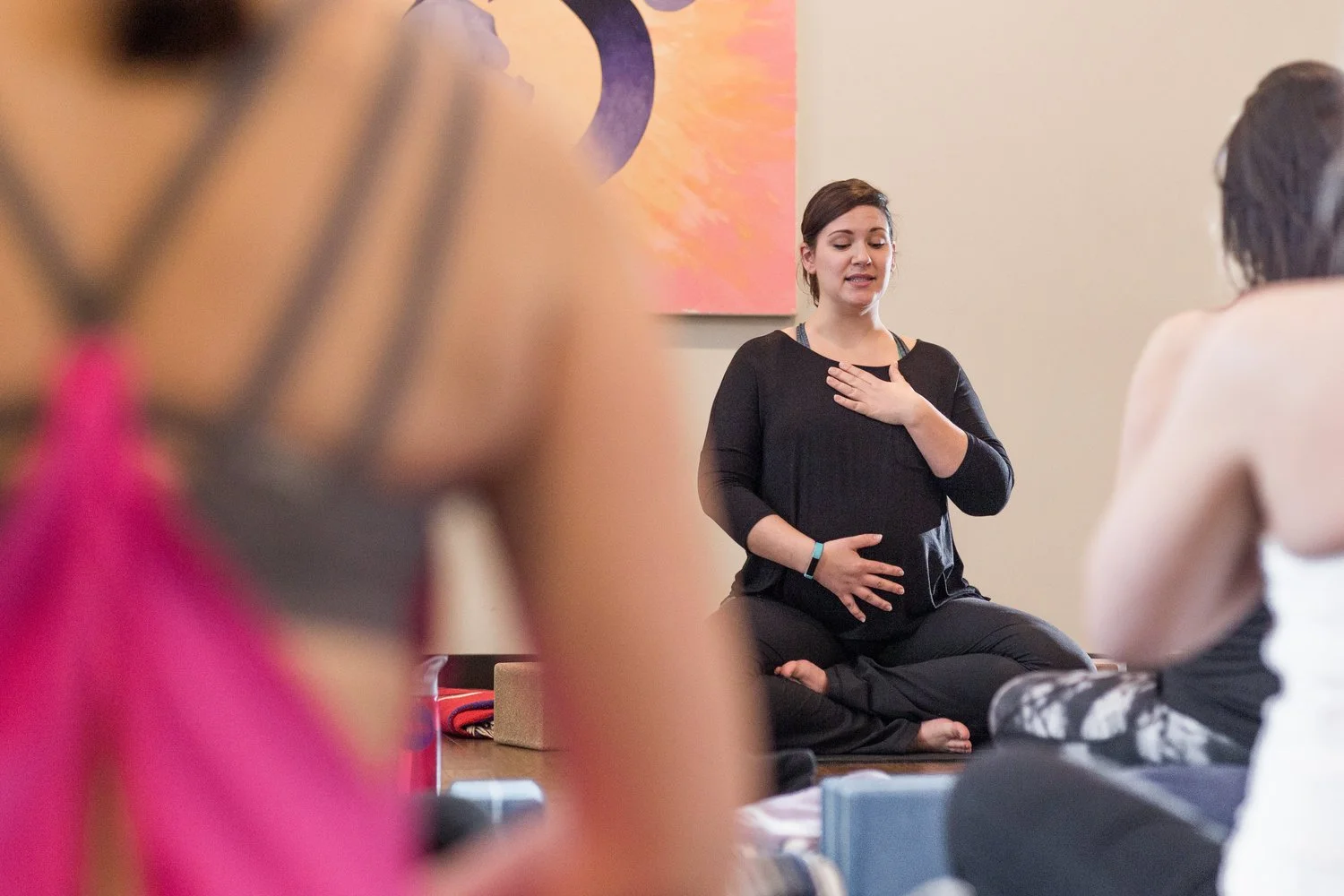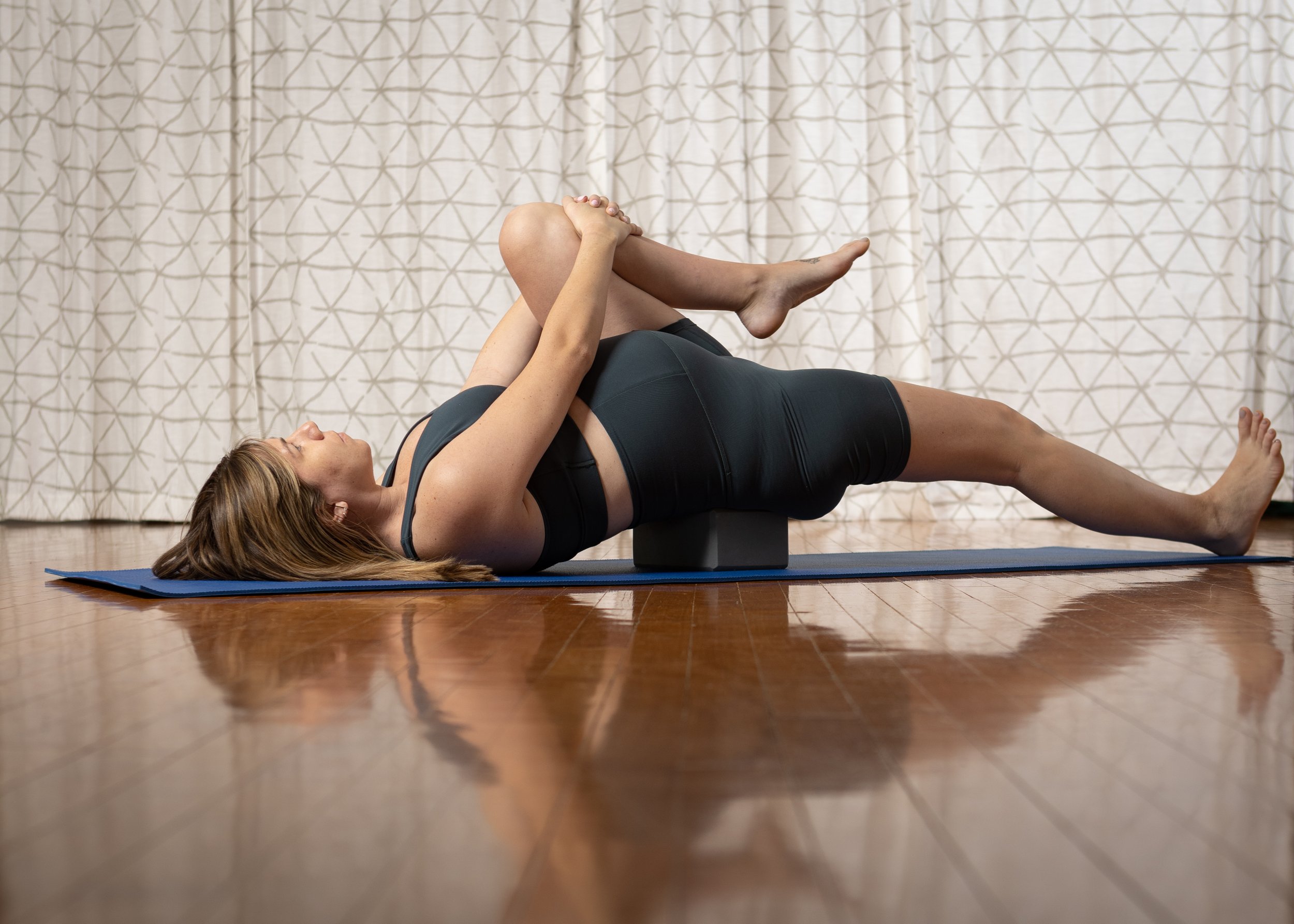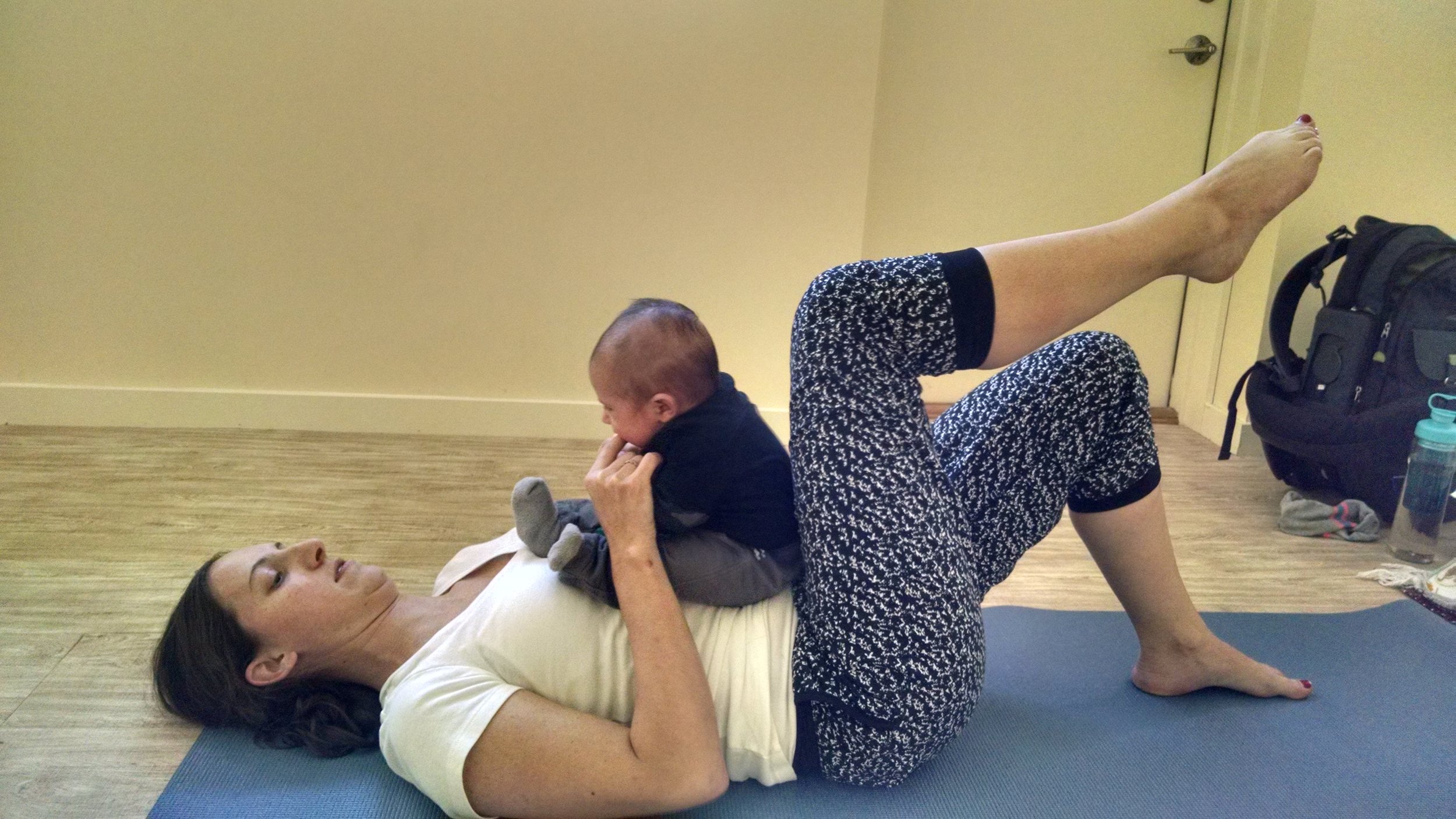Om Birth's Blog
Mindful Mommy Musings, Stay informed and Inspired!
The psoas muscle plays a crucial role in posture, breathing, and even emotional regulation—making it essential for pregnancy, labor, and postpartum recovery. In this blog post, we explore why releasing and lengthening the psoas can ease back pain, improve breathing, and create more space in the pelvis for a smoother birth experience. Learn how this deep core muscle influences your nervous system, movement, and overall well-being—plus, discover a simple exercise to release tension and restore balance. Read more to unlock the power of your psoas!
Down Dog- Possibly one of the best known yoga poses, and an inherently popular one amongst small children as well. This pose has several benefits for pregnancy and labor preparation and can be done in two orientations depending on arm strength, comfort, and flexibility.
I have been a prenatal yoga teacher and a birth doula for the past 15 years, so I was eagerly looking forward to actually experiencing labor myself. I planned a home birth, using my professional connections to select the exact midwife team and the best support I could have. I even had a nominal statement from one of the few OB’s I trusted for hospital birth that if anything happened I could call her if we transferred…Not that I expected to need it, but just to have all the bases covered.
If you have recently become pregnant or have friends who are expecting, you’ve probably heard a lot of talk about prenatal yoga. Recent studies have pointed to the benefits of practicing gentle yoga before giving birth. And a recent controlled trial showed positive results after only a few sessions.
The psoas muscle plays a crucial role in posture, breathing, and even emotional regulation—making it essential for pregnancy, labor, and postpartum recovery. In this blog post, we explore why releasing and lengthening the psoas can ease back pain, improve breathing, and create more space in the pelvis for a smoother birth experience. Learn how this deep core muscle influences your nervous system, movement, and overall well-being—plus, discover a simple exercise to release tension and restore balance. Read more to unlock the power of your psoas!
Over the last few years, I’ve had the pleasure of working with a lot of incredible women who were struggling with preparing for birth. I’ve also worked with some amazing yoga teachers on guiding their students through this transformative time. They’re smart, driven, compassionate women who do so much to set themselves and their students up for success.
But here’s the thing—no matter how dedicated they are, I’ve noticed they’re often making the same mistakes that are jeopardizing their yoga birth preparation
Pregnancy is an incredible time of transformation and your yoga practice can be a powerful tool to support your journey -you just need some structure. That’s where I come in! I’m going to give you the keys to crafting and adapting those New Year’s resolutions into an effective practice for a pregnant body!
Pregnancy is an incredible time of transformation and your yoga practice can be a powerful tool to support your journey -you just need some structure. That’s where I come in! I’m going to give you the keys to crafting and adapting those New Year’s resolutions into an effective practice for a pregnant body!
When we focus excessively on outward rotating movements, two things happen. We begin to develop an imbalance in the possible movements within the pelvis, and maybe just as troubling- especially for birth preparation- we miss connecting with the posterior half of the pelvic floor!
Let’s dive a bit deeper…
We always talk about the hormonal blueprint being the key to labor progression. That we need the mixture of oxytocin, and relaxing plus a few more to stimulate the outer fibers of the uterus to tighten and draw the cervix back over the baby's head. But yes, without pliable and supportive connective tissues no amount of oxytocin will bring the baby into the world, and at the same time, without those hormones in play, even the most balanced muscle and fascia tissues won't by themselves put you into labor...
Down Dog- Possibly one of the best known yoga poses, and an inherently popular one amongst small children as well. This pose has several benefits for pregnancy and labor preparation and can be done in two orientations depending on arm strength, comfort, and flexibility.
The psoas is the deepest hip flexor in the body, and has a dramatic impact on both the spinal positioning, as well as how the baby positions during pregnancy. Draping over the pelvic right and left, the two muscles almost serve as a guidewire for the baby to rotate and enter the pelvis.
It's one of the most well known yoga movements, but Cat/Cow offers far more than simply mobilizing your spine and freeing your hips. When done well this rocking movement sequence can bring better balance to the pelvic floor, mobilize pelvic joints in preparation for labor, tone the deep abdominals, and create fluidity throughout the spine to allow for better alignment throughout pregnancy.
I want to debunk the 3 biggest misconceptions about what it means to have a meditation practice as a parent.
I recently thought back on how having a mindfulness practice helped me in my life as both a yogi and a parent, and I realized that one of the most powerful ways it shifted things, was it helped me be friendly with my own inner critic, which has then helped me be more aware and present as a parent.
I'm going to share a little secret I tell all my childbirth education classes. There is no one right way to birth- except for the one that is right for you on the day this baby arrives.
Ask around the yoga world and you will get wildly differing opinions about whether or not to do plank pose. Some say this is the best way to maintain abdominal strength throughout pregnancy, while others say the pose will contribute to diastasis recti and should be avoided at all times. And still others will split the fence and say it is fine in the first trimester, but not afterwards. No wonder many moms (and yoga teachers) are left with confusion around this pose!
Once we come to the opening of that labor tunnel, and we feel ourselves going in, we want to go in without hesitation and begin working with whatever experience lies within it. And inside the tunnel is, well, like a tunnel. Meaning things may seem dark, maybe scary, it may seem lonely or claustrophobic, since after all we are in a tunnel. And here is where the final cornerstone to working with your labor comes into play. What is your magic labor thought?
Things falling apart is a kind of testing and also a kind of healing. We think that the point is to pass the test or to solve the problem, but the truth is that things don’t really get solved. They come together, and they fall apart. Then they come together again and fall apart again. It’s just like that. The healing comes from letting there be room for all of this to happen. Room for grief, room for relief, for suffering, for joy” -Pema Chodron
I know what you’re thinking. She means the Birth canal, right?
Nope!
While I could wax poetical about the different aspects, twists and turns, and unique properties of the pathway through the pelvic, not to mention a whole discussion of why we refer to this part of the body by a structure that involves high concrete walls (Um, not a good image here!) The tunnel I’m referring to is the mental one we all have to move into and through during the process of welcoming our babies. And how we engage with this mental space is the 3rd cornerstone in working with our labor.
Sometimes I wonder about the impact of yoga for my students in their birth experiences, because so often people just seem to disappear from classes when they give birth. So I was extremely grateful to this mom who was able to share her birth story with me. It illustrates just how much being empowered and trusting in your body and your baby can influence our ability to lean into the circumstances of our labor and birth.
There’s a very simple practice that I teach to all my yoga students about how to promote lifelong function and tone in their pelvic floor during and after their pregnancy. And if you read my earlier post you probably know that it’s not Kegels!
What if you could do actual functional exercises, learn the physiology, and actually prepare the pelvic floor not only for birth, but to avoid tearing and be better able to recover afterwards? Who wouldn't like to pee their pants less post birth!? (Yeah, that's a thing, if no one's mentioned it yet. Common- but not normal!)
Ok Truth time. I have been ragingly mad at my own child.
I still remember the moment, we were in one of our epic struggles around naps, and I was trying to get him to quiet down, all the while thinking about how I was going to be late for my Mommy Meditation group- Oh the irony!
There are things you can control for during childbirth, and there are things you cannot. Rather than wasting your time trying to control things you can’t influence in the first place, stay on your mat. Stick to what you can actually control and then find ways to let go of the rest.
How is Labor like Valentines day? No this isn’t one of those horrible jokes. The childbirth process and the hallmark holiday are both centered around one key emotion that guides the whole process: Love.
Or more specifically for labor, the love hormone of Oxytocin.
Ask someone the first thought they associate with childbirth, and they usually say pain. This idea has been reinforced for years. Story after story mentions the pain, sometimes focusing on it almost exclusively. Certainly there can be pain during the labor process, but the key to this cornerstone of working with your labor is this: Your experience isn’t about the pain. It's about your mental attitude towards it.
As a doula I assisted at nearly 300 births before I stepped back from active practice. Certainly not all of these were unmedicated labors. In fact there were numerous labors I attended which made use of an epidural to help mom rest, relax, and ultimately release into the process of birth. I loved attending these births every bit as much as the natural ones. Every birth was truly magical. But I began to notice an occurrence in the immediate postpartum hour that seemed more common with the epidural and cesarean births. Shaking.
First time babies don’t usually fall out of their mother’s body. That you have some warning that they are coming, and usually that warning is soon enough that you will be able to arrive at your birthing facility in plenty of time to receive your baby. But of course there are those exceptions…And sometimes those births are exactly what you were hoping for.
The last post also talked about some of the simple things we can do to avoid and reduce the chances for having a Diastasis Recti (DR).
But what if we already have one and we still want to create deeper strength, or regain stability through the whole core body? Should we just be popping back into crunches and planks? (A hint the answer is NO!)
A 2016 study found that as many as 60% of women in the US have some form of Diastasis recti during pregnancy or postpartum. Nearly all pregnant people will have some widening of the linea alba- the connective tissue line that links the surface abdominal fibers of the rectus abdominus. (Think of the “six pack” muscle. That indent in the middle? That’s the linea alba. This dense fascia is meant to stretch during pregnancy to accommodate the growing uterus and baby, but if stretched too much, or loaded too heavily the tissue can separate, leaving a space in the top layer of the abdominal wall. This can then result in challenges such as back and hip pain, organ prolapse, incontinence, and general reconnecting to the core postpartum.
What if I told you that the aches and pains we think of as inevitable in pregnancy are actually windows into how to have a better birth experience? That those aching SI joints might be telling you something about the position of your cervix…
Aching lower back, hip pain, calf cramps, stiff shoulders…Whenever I ask a prenatal yoga class what they would like to work on the list almost always includes these, and it doesn’t stop there. It almost goes without saying that being pregnant can put a huge load on your body. But for me, these aches and pains aren’t inevitable consequences of being pregnant, they are rather windows into where the body might be holding too much or too little tone, and if we practice some simple movements on a regular basis (like daily), we could re-balance the load on the connective tissues, and not only create more comfortable pregnancies, but actually ease the process of labor, birth, and postpartum recovery!
I often find in teaching prenatal yoga, that I have to adjust my instructions from the classic or traditional ways in which certain asanas are instructed. Part of this is because the body most of the yoga asanas were developed on was a male body, but some of this is also because some of the cues are outdated, and have become overused or over-instructed. The prime example? Tucking the tailbone!
































